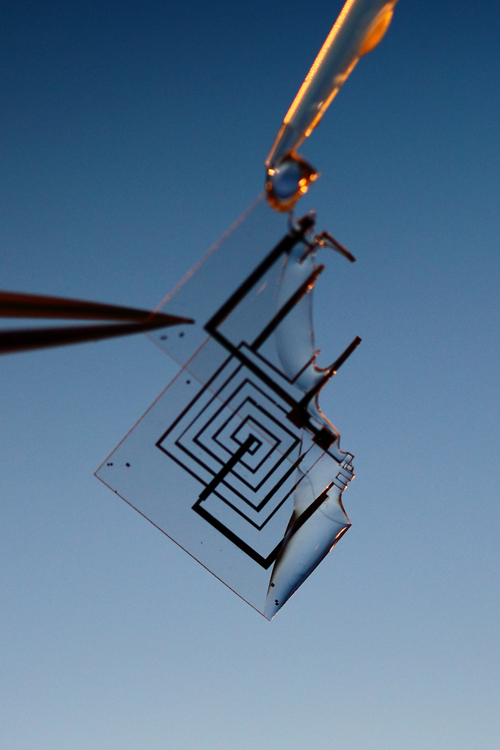Scientists Invent Electronic Circuits That Dissolve In The Body

Scientists based at the University of Illinois have developed ultra-thin electronic devices that, after an initial latency period, simply melt away into the body. Described in the journal Science, the technology has already been used to heat a wound in order for it to remain infection-free from bacteria.
Getting this technology to work effectively or even at all has been a challenge, and comes from the same researchers that developed wholly unique 'electronic tattoos'. Made from silicon, magnesium oxide and encased in silk as a layer of protection, the researchers behind the feat had to overcome a set of hurdles to get such a device to dissolve in the first place, let alone controlling when such an event might occur within the body. Since silicon is already water-soluble, the first step was to develop incredibly thin  sheets called 'nano-membranes' that would take just weeks if not days to dissolve naturally. The silk coating holds back the re-absorption process even further, preventing the circuit from degrading immediately after transfer into the body.
sheets called 'nano-membranes' that would take just weeks if not days to dissolve naturally. The silk coating holds back the re-absorption process even further, preventing the circuit from degrading immediately after transfer into the body.
While not exactly the level of human augmentation you'd find in the likes of Deus Ex – quite a way from it, in fact, this field is called 'transient electronics' – the devices nevertheless could play a major role in health care as we move forward. For example, an implanted circuit could potentially release medicine in small doses and in regular intervals over an extended period of time (an insulin injection for diabetics, perhaps), or even monitor a patients' life signs after surgery while they are in intensive care.
Still in the very early stages of development, the technology shows a whole lot of promise, and the potential uses of which could reach far beyond sole medical purposes.
Harvey McDaniel
Source: News Bureau - University of Illinois
Image Credit: Beckman Institute, University of Illinois and Tufts University

